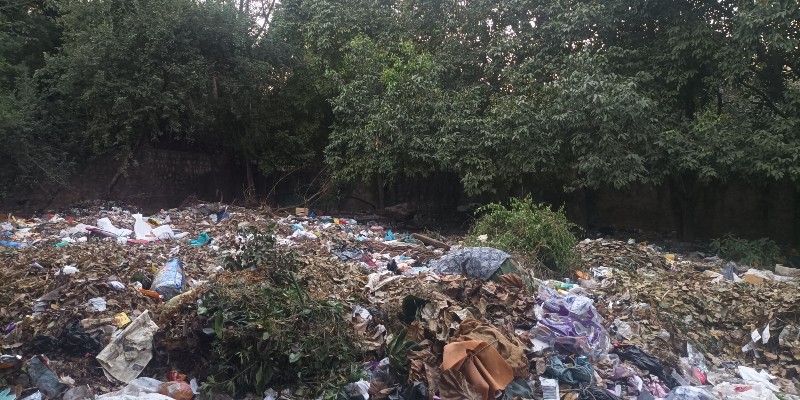Blog
Climate Change and Indian Youth

Young Advisor, Agastya, is from Delhi, India and is experiencing first-hand the effects of climate change. He shares insights on climate adaptation and mitigation policies in India and how youth are an integral part of climate action!
Climate Change and Indian Youth
Large developing countries like India are heavily impacted by climate change. Living in India, I have firsthand experience of this. As a youth living in Delhi, I have experienced air pollution affecting my health, leading to asthma and changes in climate conditions affecting my overall quality of life. In the summer of 2024, the Delhi government in India announced the closure of schools and started holidays earlier than normal in order to avoid the growing heatwaves. In the winter of 2024, schools had to be shut down and adopt a hybrid model of teaching in the wake of the deteriorating air quality. In a survey conducted by the Centre for Science and Environment, 94% of Indian youth opined that their life has been impacted by climate change. Among the 1,931 youth who participated in the survey, 88 percent noted changes in their physical surroundings. Many highlighted issues ranging from disruption in education to school closures, less productivity, and outdoor activities affecting physical and mental health. These findings are important given the fact that India has the world's largest youth population, and their perspectives are important in our climate story. At the same time, I am also witnessing the climate discourse taking place in the country.
Climate change policies in India and a focus on Youth
India has attempted to address climate change by adopting the National Action Plan on Climate Change (NAPCC). The primary focus of the NAPCC is on the technological aspects of mitigation and adaptation. NPACC briefly recognizes the unique vulnerability of children. The NAPCC states:
"With climate change, there would be an increasing scarcity of water, reduction of yields in forest biomass, and increased risks to human health for children, women, and the elderly in a household becoming the most vulnerable. With the possibility of the decline in the availability of food grains, the threat of malnutrition may also increase."
The NAPCC also refers to “protecting the poor and vulnerable sections of society through an inclusive and sustainable development strategy, sensitive to climate change.” The youth and their concerns can easily be interpreted as part of the vulnerable sections of society, as indicated in the NAPCC. However, categorizing youth merely as ‘vulnerable’ often overlooks the active and potential contribution of youth in climate change response strategies and programs.
To illustrate, there are many inspiring stories of youth activists in India who have been voicing the need to adopt climate responses, taking into consideration equity and justice. For instance, in 2019, the global movement of Fridays for Future inspired hundreds of Indian students to skip school as a mark of highlighting the climate concerns. Another inspiring story was sparked by Miss Ridhima Pandey who filed a public interest litigation before the National Green Tribunal alleging inadequate actions on the part of the Government to respond to climate change. Though the case was dismissed on the grounds that there are no reasons to believe that the Government is not taking adequate steps, the petition gained traction in the public domain. These stories of activism suggest that youths are not just mere victims of climate change. They can be the active voice of change. The importance of youth action is more important than ever before for India in the wake of its net zero target for 2070.
In its pursuits of the net zero target, India have been able to attract almost 44 billion dollars towards climate finance but mostly from public sector (20 billion dollars) including government of India. Leveraging private sector investments have remained a challenge, even in a large country like India, and this will be a key to achieve NAPCC and the net zero goal. The role of youth will be critical in mobilising this private sector investment in terms of advocacy and convincing their own families and households in investing towards renewable energy technology. As a young person living in India, my house has a 4.4 KW solar rooftop system, and my family drives an electric vehicle with a 55-kWh battery. In fact, it is the solar rooftop that powers my electric vehicle, making my household close to a net zero household!
Youth Leadership: A Path Forward
Youth have a critical role to play in addressing the climate challenges. In the Indian context, despite the lack of policy spaces, they have championed renewable energy projects and advocated for sustainable policies. Currently, I am working with a local solar company to raise awareness for village solar installations. However, these are examples of individual actions. There are institutional challenges in the way of more concrete and concerted youth actions against climate change. Firstly, information about climate change has been missing at the curriculum level. In the entire NCERT (National Council of Educational and Research Training) school curriculum, climate change and its impacts have not been focused on, leading to a scenario where education is not helping to equip the youth themselves to be resilient in the face of climate change. Secondly, for young people to lead from front of the movement to just transition, they need access to finance, training, and capacity building opportunities. Agencies and civil societies must mainstream the concerns of youth and their participation in their climate actions. Climate fund mechanisms can establish specific youth focal themes and youth fellowships and support youth led organizations and youth entrepreneurs in accessing climate finance that can be critical in terms of learning and contributing technical expertise, in the implementation of climate initiatives. It is to be remembered that youth with access to social media and digital platforms are uniquely placed to raise climate awareness and mobilize communities within India. They are not merely passive victims of this crisis but can be powerful agents of change. With their energy, creativity, and determination, youth are pivotal to driving this transition.
Written by Agastya Jain, Young Advisor, Youth Climate Justice Project

